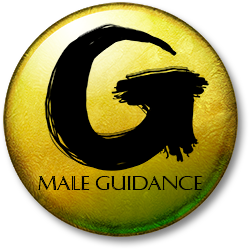
Aristotle’s Wheel Paradox Explained Simply
Have you ever looked at a wheel and wondered how it works when it rolls? Aristotle did. Over 2,000 years ago, he asked a strange question about wheels. This question became known as Aristotle’s Wheel Paradox. It may seem simple, but it makes people think hard—even today.
Let’s take a close look at this idea and see why it’s still so interesting.
What Is the Wheel Paradox?
The wheel paradox starts with two circles. One circle is big. The other one is smaller, and it sits inside the bigger circle. They share the same center, and they stick together, like the edge of a tire and the edge of a hubcap.
Now, imagine you roll this double wheel across the ground. You mark both the outer edge and the inner edge with a dot of paint. As the wheel rolls, each dot touches the ground and leaves a mark.
Here comes the strange part: when the wheel rolls one full turn, both the big circle and the small circle make one full rotation. So, they both leave behind one line of paint each. But how can this be? The big circle is longer around than the small circle. If both lines of paint are the same length, doesn’t that break the rules of math?
That’s the paradox.
A Closer Look at the Problem
Let’s say the big circle has a radius of 10 inches. The small circle has a radius of 5 inches. That means the big circle is twice as big as the small one. The distance around the edge of a circle is called the circumference. You can find it by using this formula:
Circumference = 2 × π × radius
So:
- Big circle: 2 × π × 10 = 62.8 inches (about)
- Small circle: 2 × π × 5 = 31.4 inches (about)
That means when the wheel rolls once, the big circle should leave a line 62.8 inches long. The small circle should leave a line only 31.4 inches long.
But if both turn once, how can they leave lines of the same length?
That’s what makes it a paradox.
What Aristotle Thought
Aristotle noticed this strange idea. He didn’t solve it completely, but he pointed it out. He said it didn’t make sense that two different-sized circles could both travel the same distance if they both turned once.
This puzzle has confused people for a long time. Even smart thinkers and scientists needed time to figure it out.
What’s Really Going On?
To solve the paradox, we need to look at how the wheels touch the ground.
Only the outer edge of the wheel touches the ground. That edge rolls and leaves a mark. The inner circle turns at the same time, but it does not touch the ground. So, its paint mark isn’t real—it’s imaginary.
Even though the small circle turns once, it doesn’t roll along the ground. It turns in the air, not on the surface. So, the paint on the small circle wouldn’t actually leave a mark the same way. It spins, but it doesn’t roll.
That means the big circle moves across the ground, making a full-length line. The small circle spins, but it doesn’t cover the same distance. Its turning is not the same as the rolling motion of the big circle.
Why It Matters
This paradox teaches us to think carefully. Just because two things turn together doesn’t mean they move in the same way. Rotation and movement are not always equal.
The paradox also shows how the mind can get tricked. If we don’t look closely, we might believe something that isn’t true. That’s why it’s important to ask questions and test our ideas.
A Real-Life Example
Imagine a roll of tape. The outside part touches the ground. The cardboard ring inside doesn’t. If you mark both the outer edge and the inner ring and roll it, you’ll see only the outer edge touches the floor. The inner ring turns but doesn’t roll on anything.
This is just like Aristotle’s double wheel. The tape roll shows how the outside circle moves forward, while the inside only spins.
What We Can Learn from It
Aristotle’s Wheel Paradox helps us:
- Think deeper about motion
- Understand the difference between spinning and rolling
- Question things that seem simple
- Use math and science to test ideas
Even middle school students can explore this idea. It shows how cool and strange the world of geometry and physics can be.
Denouement
Aristotle’s Wheel Paradox may sound like a simple question, but it opens the door to big ideas. It teaches us to look closer at how things move and how math describes the world. By thinking like Aristotle, we can learn more, spot tricky problems, and understand that not everything is as it seems at first glance. That’s what makes learning fun—and what makes science and math exciting.











